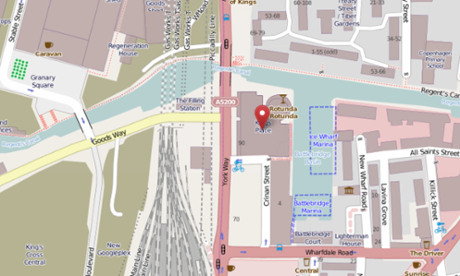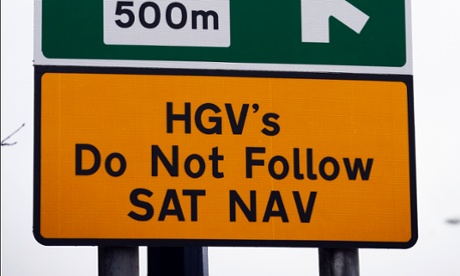Ten Healthcare Mistakes and How to Avoid Them
 Ten Healthcare Mistakes and How to Avoid Them
Ten Healthcare Mistakes and How to Avoid Them
Mistake #1: Assume that your body is none of your business and hand it over to a doctor to “fix.”Nobody knows your body better than you, and when you hand over your power, you put your health at risk.
The Solution: Trust what you know about your body, listen to the wisdom of your Inner Pilot Light, and make sure you stay the boss of your body.
Mistake #2: Keep your doctor in the dark. Those medical forms are there for a reason. Even if you’re embarrassed, ashamed, or afraid your doctor will betray your confidence, it’s critical that your doctor knows the whole story.
The Solution: Regulations require your doctor to keep everything you say in confidence, but just to make sure, ask your doctor if everything you say will stay private. When your doctor reassures you—and assuming you can trust your doctor—tell the truth, the whole truth, and nothing but the truth. (If you don’t feel you can trust your doctor not to judge you, criticize you, or betray your trust, find another doctor—pronto!)
Mistake #3: Expect your doctors to communicate with each other. In a perfect world, they would sit around a healing roundtable, comparing notes and brainstorming about what’s best for you, but in the real world of fax machines, lost paperwork, and overbooked schedules, don’t count on it.
The Solution: Keep copies of all your medical records and present them anytime you see someone new. When you get a new laboratory test or radiology study, ask for a copy for your file and follow up if you don’t receive it. Make sure you bring your folder to all doctor’s appointments. It’s also helpful if you keep a detailed record of all your symptoms, including a timeline and what makes your symptoms better or worse.
Mistake #4: Show up for your health care without doing your homework. Remember, your doctor only has so much room in his or her brain for details of unusual symptoms or rare diseases. Hopefully, your doctor will do his or her own research, but even so, when it’s your disease, you may wind up knowing more about your illness than your doctor.
The Solution: Fully research your symptom or illness and print out copies of what you’ve learned to bring to your doctor’s visit (seek out trustworthy resources like WebMD, MayoClinic, and sites where you can get Q&A free of charge by MDs, such as Avvo.com). You can also use your research skills by checking out your doctor on sites like Yelp, Google searching your doctor, asking your doctor for references (keep in mind patient confidentiality), and enlisting the help of the librarian at the hospital library.
Mistake #5: Fail to question your diagnosis or treatment plan and trust that whatever your doctor recommends is best for you, even if it goes against your intuition. When your doctor suggests a treatment plan, ask questions until you fully understand the risks and benefits of your options and feel qualified to make a decision.
The Solution: If the diagnosis or treatment doesn’t feel right, be respectful but speak up! And don’t be afraid to get a second opinion if you don’t feel confident that you’ve been given the right diagnosis and treatment plan. After all, it’s your body. Your life.
Mistake #6: Keep quiet when the front desk or medical assistant blocks your access to your doctor. It’s not fair, but it’s true that “the squeaky wheel gets the grease.”
The Solution: You have the right to communicate with your doctor! Your doctor is in the service industry and is in service to YOU (it’s not the other way around). Keep in mind that front desk or medical assistant jobs are often low paying and easily replaced, and people who work in these jobs may feel powerless in other aspects of their lives, wielding their power to the detriment of patient care. When interacting with the front desk or a medical assistant, remember that these people are your allies. Be kind and respectful, not entitled, make conversation with them when you’re there in person, and realize that they are the gatekeepers to your doctor’s time, and if you want access, it’s in your best interest to be polite. That said, if you call with an urgent issue (procrastination on your end doesn’t count) and you get stonewalled, demand to speak to your doctor. Often, the doctor doesn’t even know you’ve been trying to get through. It’s your right to get your needs met.
Mistake #7: Let your doctor’s ego bulldoze you. It’s your responsibility to take charge of your seven and a half minutes, show up as an equal partner in collaboration, identify when your doctor’s ego (we all have them) may be interfering with your optimal health, and communicate your needs.
The Solution: If your doctor’s ego is running the show and initiating better communication doesn’t solve the problem, be willing to seek out another doctor, even if it means paying cash to find the best possible health care. At the end of the day, there’s nothing more important than your health. You deserve the best, and the best doctors aren’t ruled by their egos.
Mistake #8: Stay quiet when your doctor discredits alternative healthcare methods that are actually working for you. If your doctor is dissing your acupuncturist, your homeopath, or your shaman, don’t just clam up.
The Solution: Explain that you’re receiving benefit from these providers and that you’ve chosen to have them on your team. Ask your doctor to willingly collaborate with these providers in an open, nonjudgmental way. If your doctor continues to call your other providers “quacks,” you might need to find a better fit. (Trust me, we’re out there!)
Mistake #9: Assume that a pill is always the solution. Patients are as responsible as doctors for the current expectation that every symptom can be solved with a pill.
The Solution: Be willing to investigate the root cause of your illness. Dig deep and ask yourself “What does my body need in order to heal?” If you listen up, you might just find that the real prescription lies much deeper, and a pill would only be a Band-Aid.
Mistake #10: Never question outcomes. If you don’t get the outcome you want, don’t instantly assume that’s as good as it gets. If you had surgery for back pain and your back still hurts, communicate. If the birth control pill only makes you bleed more, tell your doctor. If you feel even worse after the treatment you received, don’t be afraid to question the outcome.
The Solution: Communicate in as much detail as possible what is not working. Push the envelope. Get your doctor to hit the books but be willing to do your personal work too. Sometimes the solution lies not in some external treatment, but within you. Own your part in your illness, and you just might find that you make your body ripe for miracles.
















